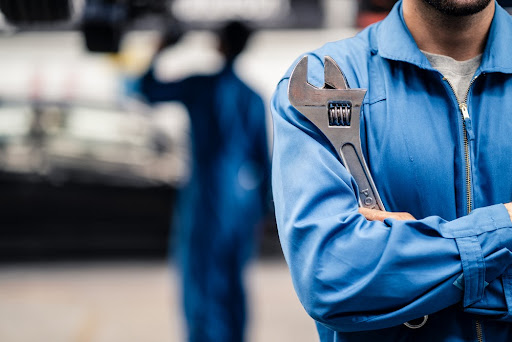
Ensuring that the pieces of machinery within an organization run smoothly requires effective maintenance management. However, while doing so, the maintenance management efforts and activities have to remain within the budget, or else they can increase costs significantly. For instance, if an organization hires multiple maintenance technicians but doesn’t have enough machinery to assign the technicians to them, or if the maintenance efforts aren’t tracking and managing spare parts & inventory effectively, costs will rise. There are even cases where high maintenance costs have led to reduced profit margins. That being said, let’s take a look at 5 strategies that help with reducing maintenance costs while improving effectiveness.
Table of Contents
5 strategies that help with reducing maintenance costs
1. Reducing unexpected equipment breakdowns
An obvious strategy of reducing maintenance costs is minimizing unplanned equipment downtime. Unexpected equipment breakdowns lead to many problems – unplanned costly repairs, production disruptions, lower throughput, idle resources – the list goes on.
Forward-thinking maintenance managers opt for planned or scheduled maintenance tasks, activities, or inspections for the pieces of equipment. Such maintenance activities help them provide the machinery with the attention it needs to function properly as well as identify any issues that might lead to malfunctions – leading to lower unplanned breakdowns in the process.
However, all of these activities warrant including preventive maintenance in this list as it’s imperative for reducing maintenance management costs for any given organization.
2. Utilizing preventive maintenance
Preventive maintenance is the most balanced maintenance management approach suitable for most organizations. There’s a saying that “a stitch in time saves nine”, and that’s exactly what preventive maintenance does.
The tasks mentioned in the previous point typically fall under preventive maintenance, but there’s more to it.
Some of the objectives of preventive maintenance are to reduce unplanned maintenance, minimize breakdowns before they occur, simplify asset repairs, and reduce workplace safety incidents. In order to do so, maintenance activities such as are planned, resources are assigned to pieces of equipment, and inspections are conducted to identify potential problems that might lead to future breakdowns.
While no maintenance management approach can eliminate breakdowns or unplanned downtime, preventive maintenance is the best bet for minimizing them as much as possible, helping with reducing maintenance costs. In fact, some of the following points are a part of preventive maintenance as well.
3. Ensuring spare parts & inventory management
How an organization manages its spare parts and inventory for the equipment can heavily impact costs. For instance, if the spare parts are unorganized, then it can take longer to replace the worn-out parts, leading to more downtime and lesser throughput. On the other hand, if spare parts and inventory aren’t managed properly, then organizations wouldn’t know if they ran out of the required parts, once again, leading to longer downtime when it comes to replacing the parts or servicing the equipment.
Organizations typically ensure spare parts and inventory management with the help of CMMS software solutions as they help document and track the materials. CloudApper CMMS, for example, helps keep all the information regarding spare parts and inventory in a centralized location. Maintenance managers know which parts are available and which need to be reordered – helping reduce downtime as well as costs.
4. Following manufacturers’ guidelines
Virtually all pieces of equipment come with manufacturer’s guidelines, recommendations, and manuals. Using this information to the T can help reduce unexpected breakdowns. For instance, these documents clearly state the specifications, capabilities, and capacity constraints of the equipment – overburdening it can lead to overheating, more wear and tear, and might even affect its longevity. Not only will repairs be common but the equipment might need to be replaced sooner rather than later – all of which are quite costly.
Thus, following the manufacturer’s instructions properly can not only improve the equipment’s longevity but can also reduce repair and replacement costs. The maintenance plan for the machinery should be planned around the recommendations and capacity of the equipment.
5. Choosing a robust CMMS solution
The tools, strategies, and technology chosen by organizations can affect maintenance management costs as well, one of the instrumental tools being the CMMS software. Unfortunately, many are still using outdated methods such as spreadsheets, obsolete CMMS software, and even paper-based systems! All of this leads to mismanagement, high costs, inefficiency, and even losses. CloudApper CMMS, on the other hand, is one of the most effective CMMS software solutions available today.
CloudApper CMMS is a powerful, robust, yet affordable CMMS solution that comes with a plethora of features. Asset management, spare parts & inventory management, vendor management, maintenance scheduling, work order management, and a powerful analytics dashboard are just some of the features that come with CloudApper CMMS – all of which can be used from smartphones.
However, the entire maintenance management solution is customizable as it’s built with CloudApper – a no-code platform for enterprise mobile app development.
Instead of changing maintenance management strategies to match the app, managers can customize CloudApper CMMS to match their requirements – making it the ideal solution. CloudApper CMMS helps organizations with reducing maintenance costs as it streamlines maintenance management efforts right from their smartphones, and more, all in an affordable package.